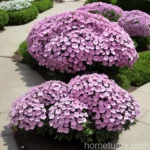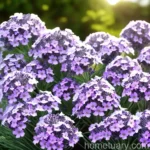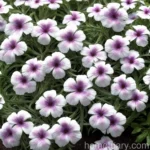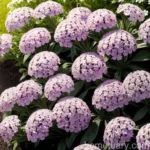Garden Phlox (Phlox paniculata ‘Eva Cullum’): A Complete Guide
Garden phlox, scientifically known as Phlox paniculata ‘Eva Cullum’, is a stunning perennial plant that adds vibrant color and fragrance to any garden or landscape. In this comprehensive guide, we will delve into the various aspects of cultivating, caring for, and enjoying this beautiful plant.
What is Garden Phlox (Phlox paniculata ‘Eva Cullum’)?
Garden phlox, also known as summer or perennial phlox, is a member of the Polemoniaceae family and is native to North America. Phlox paniculata ‘Eva Cullum’ is a specific variety of garden phlox known for its striking pink flowers and its exceptional growth habits.
Key Takeaways – Garden Phlox (Phlox paniculata ‘Eva Cullum’)
Before we explore the intricacies of caring for garden phlox, let’s review some of the key points we’ll be covering:
– Culture and uses
– Water and sunlight requirements
– Fertilizer needs
– Soil preferences
– Pruning techniques
– Propagation methods
– Container gardening
– Popularity and common varieties
– Disease resistance and pest control
– Botanist’s tips and fun facts
Now, let’s delve into each of these aspects to understand how to nurture and appreciate the beauty of garden phlox.
Culture and Uses
Uses
Garden phlox is a versatile plant with various landscape and garden uses:
– It is commonly used in borders and flower beds to add vibrant color and texture to the landscape.
– Due to its fragrant blooms, it is an excellent choice for attracting pollinators, including butterflies and hummingbirds.
– Garden phlox also serves as an ideal cut flower for floral arrangements and bouquets due to its long-lasting, showy blooms.
Water
In terms of watering needs, garden phlox thrives in moist, well-draining soil. Adequate watering, particularly during dry spells, is essential for the plant’s health and vitality. Regular watering, allowing the soil to dry slightly between waterings, is recommended to prevent waterlogged conditions, which can lead to root rot.
Sunlight
Garden phlox flourishes in full sun to partial shade. While it appreciates plenty of direct sunlight, especially in cooler climates, it can benefit from some shade during the hottest part of the day, particularly in regions with intense summer heat.
Fertilizer
Applying a balanced, slow-release fertilizer in early spring can provide the necessary nutrients for healthy growth and abundant flowering. Consider using a fertilizer with a higher phosphorus content to promote blooming. However, it’s important to follow the specific instructions on the fertilizer packaging to avoid over-fertilization, which can negatively impact the plant.
Soil
Garden phlox thrives in well-drained, fertile soil with a slightly acidic to neutral pH. Amending the soil with organic matter, such as compost, can enhance its texture and fertility, providing an optimal growing medium for the plant.
Pruning
Pruning garden phlox is essential for maintaining its shape and promoting a longer blooming period. Here are some key considerations for pruning:
– Spring Pruning: In early spring, remove any dead or damaged stems to encourage new growth and prevent disease.
– Deadheading: Regularly deadhead faded blooms to stimulate the production of new flowers and prolong the blooming season.
– Fall Cleanup: After the plant has finished blooming in the fall, cut back the stems to ground level to tidy up the garden and prepare the plant for the following year.
Propagation
Garden phlox can be propagated through various methods, including division, stem cuttings, and seed sowing. Here’s a brief overview of each propagation technique:
– Division: In early spring or fall, the plant can be divided by carefully separating the root ball into sections, each containing healthy stems and roots. These divisions can be replanted to establish new garden phlox specimens.
– Stem Cuttings: Using sterile pruners, take 4-6 inch stem cuttings from a healthy, mature plant in early summer. Remove the lower leaves, dip the cut end in a rooting hormone, and plant the cuttings in a well-draining potting mix. With consistent moisture and warmth, the cuttings will develop roots and can be transplanted to the garden.
– Seed Sowing: Collect mature seeds from the plant in the fall and sow them in a prepared seedbed. Keep the soil consistently moist and provide adequate sunlight for the seeds to germinate and develop into seedlings, which can later be transplanted to their desired locations.
Container Gardening
Garden phlox is well-suited for container gardening, offering an opportunity to enjoy its beauty on patios, balconies, and other confined spaces. When planting garden phlox in containers, it’s important to consider the following factors:
– Container Size: Choose a spacious container that accommodates the plant’s mature size while also providing ample room for root growth.
– Soil and Drainage: Use a high-quality potting mix that provides excellent drainage to prevent waterlogging, which can be detrimental to the plant’s health.
– Watering: Container-grown garden phlox may require more frequent watering, especially during hot, dry periods, to ensure that the soil remains consistently moist but not waterlogged.
– Sunlight: Place the container in a location that receives sufficient sunlight, as garden phlox thrives in full sun to partial shade.
Popularity and Common Varieties
Garden phlox is available in a wide range of cultivars, each offering unique characteristics and colors. Some popular varieties of Phlox paniculata, including ‘Eva Cullum’, are recognized for their exceptional beauty and performance in the garden. Here are a few common garden phlox varieties:
| Variety | Characteristics |
|——————————|—————————————————————|
| Phlox paniculata ‘David’ | White flowers with strong fragrance and mildew resistance |
| Phlox paniculata ‘Bright Eyes’| Pink flowers with a prominent contrasting eye |
| Phlox paniculata ‘Emerald Blue’| Violet-blue flowers with a compact growth habit |
| Phlox paniculata ‘Nicky’ | Dark magenta blooms on sturdy, mildew-resistant stems |
| Phlox paniculata ‘Delta Snow’| Pure white flowers that attract butterflies and hummingbirds |
These are just a few examples of the many beautiful garden phlox varieties available to gardeners, each offering its own unique charm and appeal.
Disease Resistance and Pest Control
Garden phlox, including the ‘Eva Cullum’ variety, is generally resilient against many common diseases and pests. However, it’s important to remain vigilant and take proactive measures to maintain the plant’s health. Some common diseases that can affect garden phlox include:
– Powdery Mildew: Keep the foliage dry and adequately spaced to prevent the development of powdery mildew. Selecting mildew-resistant cultivars, such as Phlox paniculata ‘David’, can also help mitigate this issue.
– Leaf Spot: Provide good air circulation around the plant and avoid overhead watering to reduce the risk of leaf spot diseases.
– Root Rot: Ensure proper drainage and avoid overwatering to prevent root rot, which can be detrimental to the plant’s roots.
In terms of pest control, regular monitoring of the plant for aphids, spider mites, and other common garden pests is essential for early detection and management. Consider using insecticidal soap or horticultural oils to control these pests while minimizing environmental impact.
Botanist’s Tips
For gardeners looking to cultivate healthy and vibrant garden phlox, here are a few expert tips to consider:
– Companion Planting: Pair garden phlox with other pollinator-attracting plants, such as coneflowers, bee balm, and butterfly bush, to create a vibrant and ecologically beneficial garden.
– Mulching: Apply a layer of organic mulch around the base of the plant to conserve moisture, suppress weeds, and provide insulation for the roots.
– Seasonal Care: Monitor the plant throughout the growing season, addressing any signs of stress, disease, or nutrient deficiency promptly to ensure its overall well-being.
Fun Facts
- Garden phlox is renowned for its sweet, fragrant blooms, which make it a popular choice for cutting gardens and floral arrangements.
- The name “phlox” is derived from the Greek word meaning “flame,” reflecting the plant’s fiery, vibrant flowers.
- Garden phlox is a magnet for pollinators, including bees, butterflies, and hummingbirds, making it a valuable asset in any garden or landscape.
Links to External Resources
To further expand your knowledge about garden phlox, check out these insightful resources:
1. Garden Phlox – University of Vermont Extension
2. Growing Perennial Phlox – University of Illinois Extension
In conclusion, garden phlox, particularly the captivating ‘Eva Cullum’ variety, is a delightful addition to any garden or landscape. Its vibrant blooms, resilience, and versatility make it a cherished plant among gardeners and nature enthusiasts. By understanding and implementing the best practices for its care, you can cultivate a thriving and visually stunning display of garden phlox, enhancing the beauty and biodiversity of your outdoor space.















